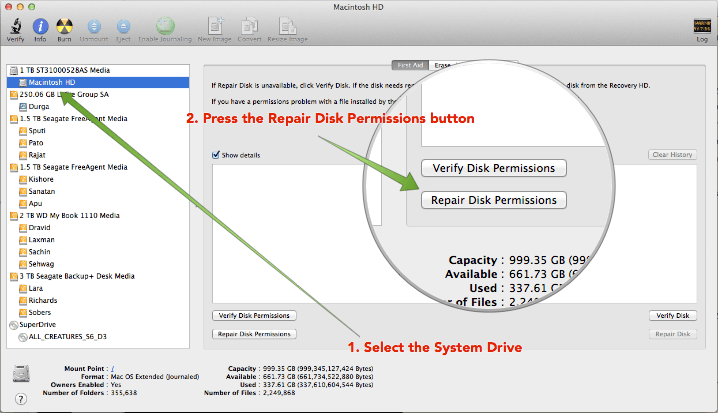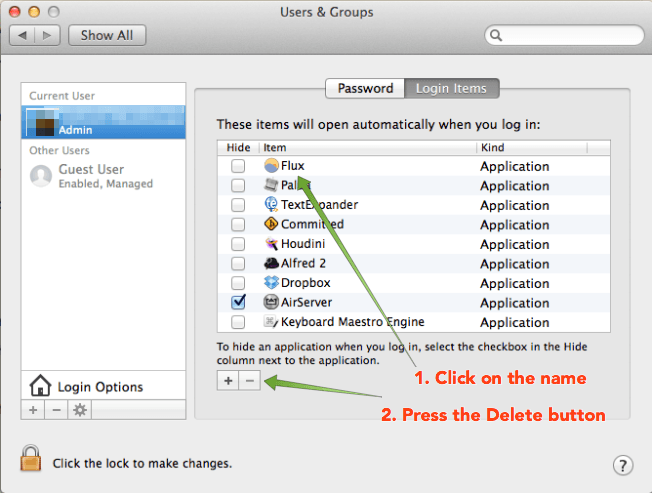Problems after upgrading to Maverick
(Originally posted on 2013-11-04)
With the release of a new version of the Mac OS comes two divergent reactions. Some people have no problems with the update and they tell you about how life is fantastic and they are liking the new update. There are these other folks who have the unfortunate experience of having everything go to hell and they face a whole bunch of issues with the update. Why does this happen? Why are there such divergent reactions to the same update?
This is not an easy question to answer. People fall in a wide spectrum when it comes to the way they maintain their Macs. Some people have it always in peak working condition, and others are not so meticulous. They seem to believe that the machine will maintain itself. Most users fall in the middle somewhere. They perform some maintenance tasks but don't do it regularly enough.
There is no one solution to everyone's problems. The only thing one can say with some degree of certainty is that there are certain things you can do to optimize performance once you have upgraded and are having problems. There are no guarantees here but there are measures you can take to make your upgrade process better.
One: Repair your hard drive
This is easy to do. Reboot the computer. Hold down the ⌘ + S key when it is in the process of rebooting. You are going to have the weird experience of seeing the command line on your Macintosh. Lots of text zipping through your monitor and most of it will make no sense to you. That is okay. Wait for all of it to stop. You are going to see a single user prompt after all this is over. In the prompt type the following:
fsck -fy
and hit enter.
The computer will tell you what is going on in a minimal way. Just let it do its thing till it comes up with another prompt. If the message is that there were things wrong with the drive and the drive was modified, type the above comment again. Hit enter.
It will do its thing. Tell you bits and pieces of information, none of it is really sensible, but what you need to wait for is the message which says, Your drive was okay. That is different from the your drive was modified message. If it was modified, keep running the command. It usually takes you to enter the command twice to get the "drive was okay" response.
After receiving the drive was okay response, type the following:
reboot
and hit enter.
Let the computer reboot and do its thing. It will eventually lead you to the Finder and you are now ready for Step 2.
Two: Repair Permissions
There is a very useful application on your computer called Disk Utility. It is the system application used to maintain, format, manage your disks and partitions. Launch it. You will find it in the sub-folder Utilities in the folder Applications. Another way of finding it is just invoking Spotlight (usually, ⌘ + Space), and typing in Disk Utility, when the application is selected in the Spotlight window, hit Return.
Highlight the drive on the left sidebar. Press on the Repair Disk Permissions button on the bottom left next to the sidebar.
Wait for the app to do its thing. What is the app doing? In UNIX, files have permissions attached to them. The root user can use this file and no one else, the owner of this account can use this file and everyone else can read this file but not write to it and so on. Repairing permissions is something that should be done periodically. It makes your computer purr along safely.
 Disk Utility Repairing Permissions
Disk Utility Repairing Permissions
The repair permissions should be done in a while and you are ready for a restart. Restart.
At this stage you should be in tip top condition. The computer should be responsive and your problems should be behind you. On the other hand, life doesn't always work out the way I want it to and you might have problems still. What do you do now?
Install Mavericks again
If you still have problems it is a good idea to install Mavericks again. Go to the App Store. Re-download Mavericks and let it run and install itself again. Get a book to read on the iPad while you do this. You are going to be here for a while.
After the re-install. Use the computer for a while. Everything should be purring along at this stage. If it isn't, we are going to go to the next stage.
Other stuff to check
Now we are in voodoo land. Every user has their own selection of programs running and they are in their own cocoon of software incompatibilities. I am not sure that I can give you specific instructions which can solve the problems you are having. But there are some general guidelines you might adhere to, to help the process of having a better computing experience:
- Check whether the software you are having trouble with has a later version than the one you are using. If it does, update the software.
- Go to the App Store and update all the software that needs to be updated from the App Store.
- Go to the Users and Groups preference pane. >System Preferences… and then Users & Groups. Click on the Login Items. Delete items that you don't use or don't really know anything about. It is always a good idea to know what is specifically installed on your machine. If you are unsure about it, maybe some research would be in order.
 Deleting login items
Deleting login items
At this point, you have done all I can recommend without knowing the specific problems you are having. If the problems persist, a call to Apple tech support, a visit to the Genius Bar in an Apple Store, or an offer of dinner to your favorite Apple geek might be on the cards.
Happy computing.
macosxguru at the gmail thingie